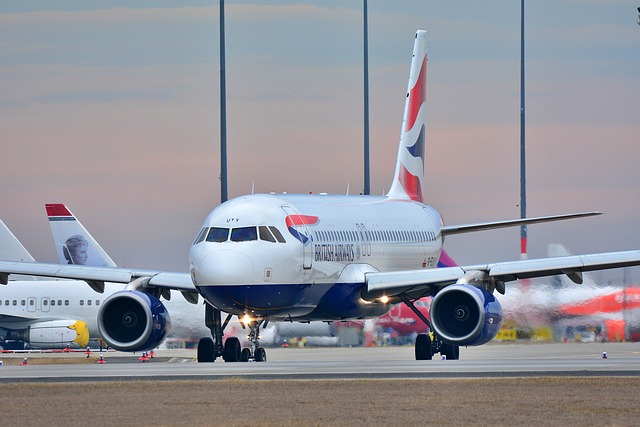Flight Training Essentials: Complete Pilot Guide
Begin your aviation journey with a clear, practical roadmap to pilot training. This guide breaks down timelines, license types, medical requirements, expected costs, and career paths in aviation. Whether you aim for a private plane or an airline cockpit, learn what training involves, how long it takes, and how to plan financially and professionally.

A career in aviation begins with structured training that blends classroom study, simulator practice, and hands-on flight hours. Whether your goal is recreational flying or commanding a passenger jet, understanding the stages, requirements, and costs involved helps you plan a realistic pathway into the cockpit.
Typical training timelines
Training duration depends on the certification you pursue and how intensively you study. For a Private Pilot License (PPL), motivated students who train frequently can often finish in about three to six months. Commercial training is more involved: full-time programs commonly take 12 to 18 months to complete. Keep in mind these are estimates — progress varies with individual aptitude, frequency of lessons, weather interruptions, aircraft availability, and exam scheduling.
License categories and ratings
Aviation certifications are tiered to match experience and intended operations:
-
Student Pilot Certificate: The entry-level authorization that permits supervised solo flights during training.
-
Private Pilot License (PPL): Allows you to fly for personal use and carry non-paying passengers; it’s the foundation of most pilot careers.
-
Commercial Pilot License (CPL): Qualifies you to accept compensation for flying duties, opening roles such as charter work and aerial services.
-
Airline Transport Pilot License (ATPL): The top-level certificate required to serve as captain of large transport aircraft; it mandates higher flight-time minimums and more stringent testing.
-
Instrument Rating: An add-on credential enabling flight by instruments under Instrument Flight Rules (IFR), crucial for flying safely in low-visibility conditions.
Each step builds experience and privileges, and many pilots combine ratings (for example, PPL + Instrument Rating) to increase safety and employability.
Medical and physical standards
Safety demands that pilots meet defined health criteria. Typical medical requirements include:
- Visual acuity (often correctable to 20/20)
- Functional hearing
- Normal color perception
- Sufficient balance and coordination
- Absence of disqualifying medical conditions that could impair judgment or performance
Pilots must complete periodic medical examinations to keep certificates valid. The frequency and thoroughness of these exams depend on the type of license and the pilot’s age; commercial and airline pilots usually face more frequent checks than private pilots.
Training costs and what they cover
Costs vary by country, school, aircraft type, and individual learning pace. Typical expenses include aircraft rental, instructor fees, ground school, study materials, examination fees, and medical exams. Below is a general cost guide based on common U.S. training benchmarks:
| License Type | Estimated Cost Range | Typical Training Hours |
|---|---|---|
| Private Pilot License (PPL) | $10,000 - $15,000 | 40-60 hours |
| Commercial Pilot License (CPL) | $30,000 - $50,000 | ~250 hours |
| Airline Transport Pilot License (ATPL) | $80,000 - $150,000 | 1,500 hours |
Prices, rates, or cost estimates mentioned in this article are based on the latest available information but may change over time. Independent research is advised before making financial decisions.
Many students offset costs through financing, scholarships, or working as flight instructors or in other aviation-support roles while accumulating hours. Be sure to budget for recurring expenses like exam fees, headsets, training materials, and living costs during intensive training blocks.
Building flight experience
Beyond formal instruction, accumulating flight time is essential. Flight hours can be built through dual instruction, supervised solo flights, cross-country trips, and time instructing others once qualified. Instrument and multi-engine hours are often required for advanced roles, and airlines generally expect substantial cross-country and night flying experience.
Career pathways after certification
A pilot certificate unlocks a range of professional and recreational options:
- Commercial airline pilot
- Charter and corporate pilot
- Flight instructor (a common way to build hours)
- Aerial application (agriculture) pilot
- Aerial firefighting and search-and-rescue pilot
- Test pilot or specialized operational roles
- Positions in aviation management, safety, or air traffic services with additional qualifications
Military flying follows a separate training route but can translate into civilian aviation opportunities after service and transition training.
Planning for success
Choose an accredited flight school with modern training aircraft and experienced instructors. Ask about average completion times, pass rates, and placement assistance for graduates. Create a realistic timeline and budget, and consider weather patterns at your training location — seasonal downtime can extend training duration.
Final thoughts
Aviation training is demanding but rewarding. It combines technical knowledge, disciplined practice, and hands-on decision-making. By understanding the license options, medical requirements, time commitments, and costs, aspiring pilots can make informed decisions and map a course to their flying goals. With dedication and the right support network, the sky becomes an achievable career and lifelong passion.






